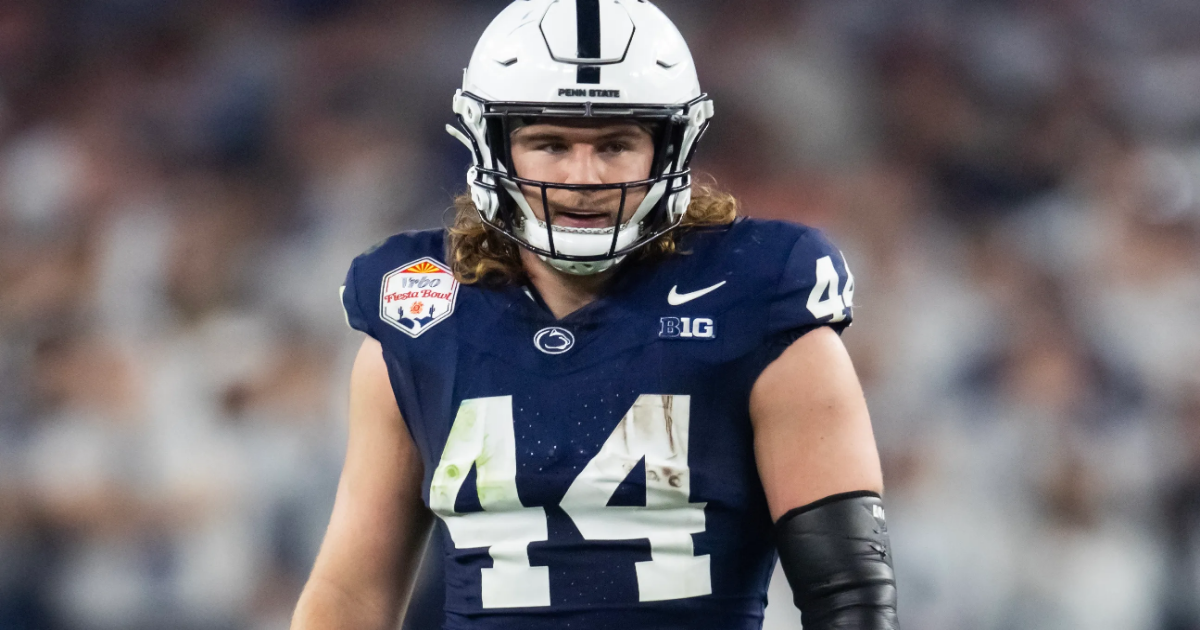
- Colston Loveland and Tyler Warren were two of the top talents in the NFL draft, which tight end will be better?
- Loveland is a complement to Bears’ Y tight end Cole Kmet. Warren stood out as a blocker and receiver
- Chris Ballard on Tyler Warren: ‘When he gets the ball in his hands, man, there’s some violence now’
INDIANAPOLIS — For months, the Colts refused to hide the reality that the whole league understood about them:
They needed a tight end. Not just any tight end but a star.
But whether their choice would end up being Penn State’s Tyler Warren or Michigan’s Colston Loveland, how close the two were and whether a trade would come in order to obtain their preferred options were the mysteries.
Thursday revealed some answers. Loveland was the first to go at No. 10 to the Bears, but Colts general manager Chris Ballard never panicked. He had his target, his perfect fit, and he was confident he’d be there at No. 14.
“The last time I felt that good about pulling a pick — and I felt good about all of them — was Quenton (Nelson),” Ballard said. “It was easy. It was easy. There wasn’t a lot of discussion.”
NFL DRAFT HUB: Live NFL Draft news, live picks, grades, analysis and more.
As the draft process played out and the Colts refined their vision for what they wanted this new tight end to be about, Warren emerged as a fit in a way that Loveland simply couldn’t match.
Ballard laid the tea leaves as recently as Monday’s pre-draft press conference:
“They have to be able to play on all three downs, but one that can affect the middle of the field,” Ballard said then.
He then went on to rave about Jack Doyle, the last reliable tight end the Colts had, a two-time Pro Bowler who thrived as a versatile blocker and who spent his final season springing Jonathan Taylor for explosive runs toward the NFL’s rushing title.
Loveland and Warren both played in the Big Ten Conference, which was not just the best league in college football last season but also the most physical. But the responsibilities and workloads they took on as blockers were inherently different.
Loveland, who measured eight pounds lighter than Warren, blocked in-line at times and mostly worked up to the second level against linebackers. Otherwise, he lined up in the slot and did his work against safeties and nickel cornerbacks. He rose to a level the Colts found acceptable as a blocker — a version Ballard termed as “functional.”
But as they searched for a Doyle replacement, Warren stood out in a very different way. It starts with his alignment versatility, as he lined up in-line, at fullback and as a move blocker from an H-back position. And it continues with his performance, as he’s able to leverage that momentum as a move blocker, affect pass rushers as a chip blocker and hold his own as an in-line tight end. He helped block for a diverse Penn State rushing attack that unleashed two 1,000-yard rushers last season.
“It’s important kind of in general as a football player to be able to be on the field as much as you can,” Warren said. “… And then as a TE, it helps kind of the whole offense being able to block and be a threat in the passing game.”
The total package mattered to a Colts team built around Taylor that’s looking to live in 11 personnel with Josh Downs manning the slot. It’s why they miss Doyle the way they do and why they have stressed the “three downs” piece of the equation.
“He’s still got some growth to do, but No. 1, it tells you about his football IQ,” Ballard said. “To be able to go in the slot, line up at tight end, line at wide, line at quarterback, line at fullback. I mean, they put a lot on that kid’s plate and he handled it mentally. So, that just tells you that he’s going to be able to handle a high volume on Sunday of whatever we ask him to do.”
It’s not the way every team viewed these two, and that’s made obvious by the fact that the Bears took Loveland ahead of Warren to pair with Cole Kmet, who is more of the traditional “Y” tight end already in Warren’s mold. But that discrepancy only underscores the stylistic differences that became the way to separate the two top options in the class.
Warren didn’t only stand out to the Colts as a blocker. After all, he turned in 104 catches for 1,233 yards and eight touchdowns last season, numbers that are hard to comprehend for a Colts team whose leading tight end produced 14 catches for 182 yards that same fall.
But the blocking ability and alignment versatility will play into how they structure their passing patterns as well. By living in 11 personnel, the Colts can keep a steady diet of option routes for Downs from the slot, where is too often where Loveland needs to line up. Warren can thrive out of the backfield or in-line more, which creates optionality to how Shane Steichen wants to draw up his protections and designs, especially on his trademark run-pass-option concepts.
The toughness and tenacity he plays with as a blocker lives in his routes as well, which can help the Colts in the part of the passing game they feel needs the most work in the middle of the field.
“When he gets the ball in his hands, man, there’s some violence now that he’s going to deliver to the defender, especially at the second level,” Ballard said. “That aggressive mentality I think is going to benefit him very well.”
Get IndyStar’s Colts coverage sent directly to your inbox with the Colts Insider newsletter.
